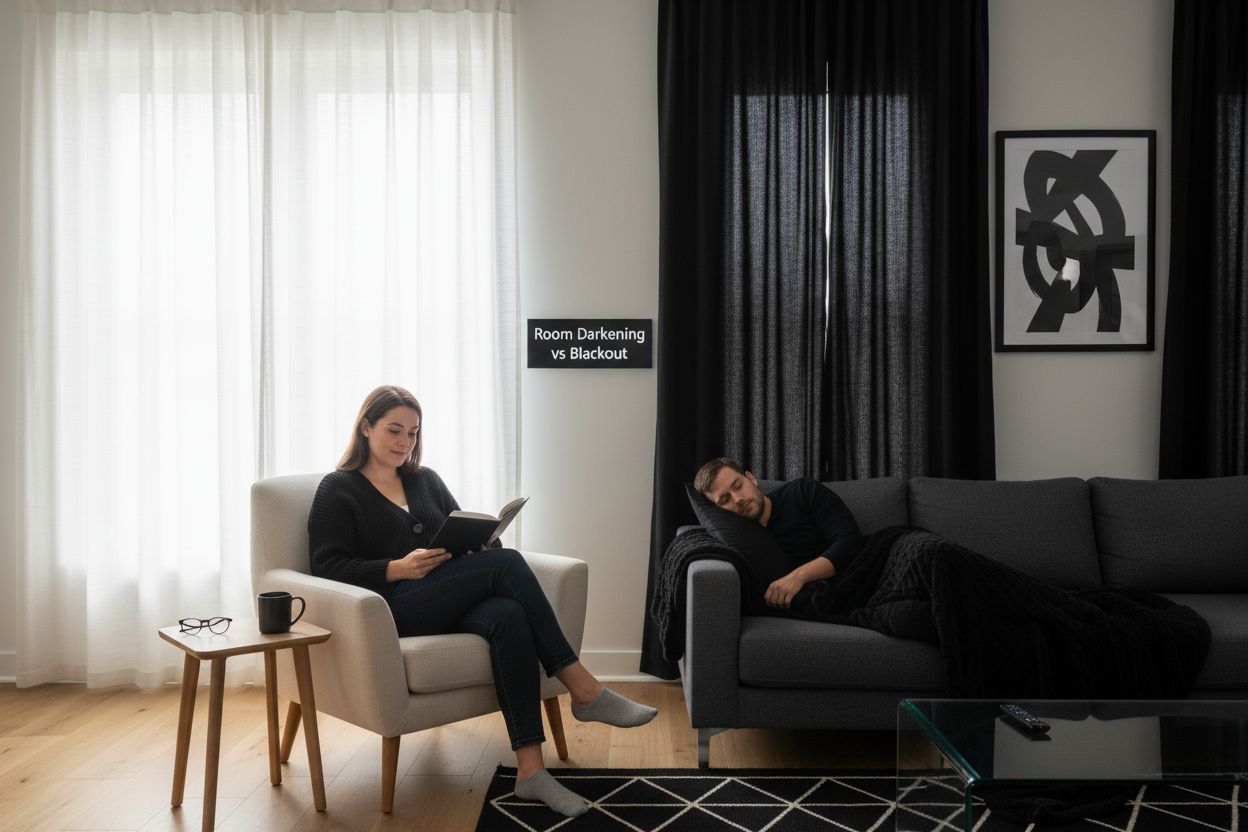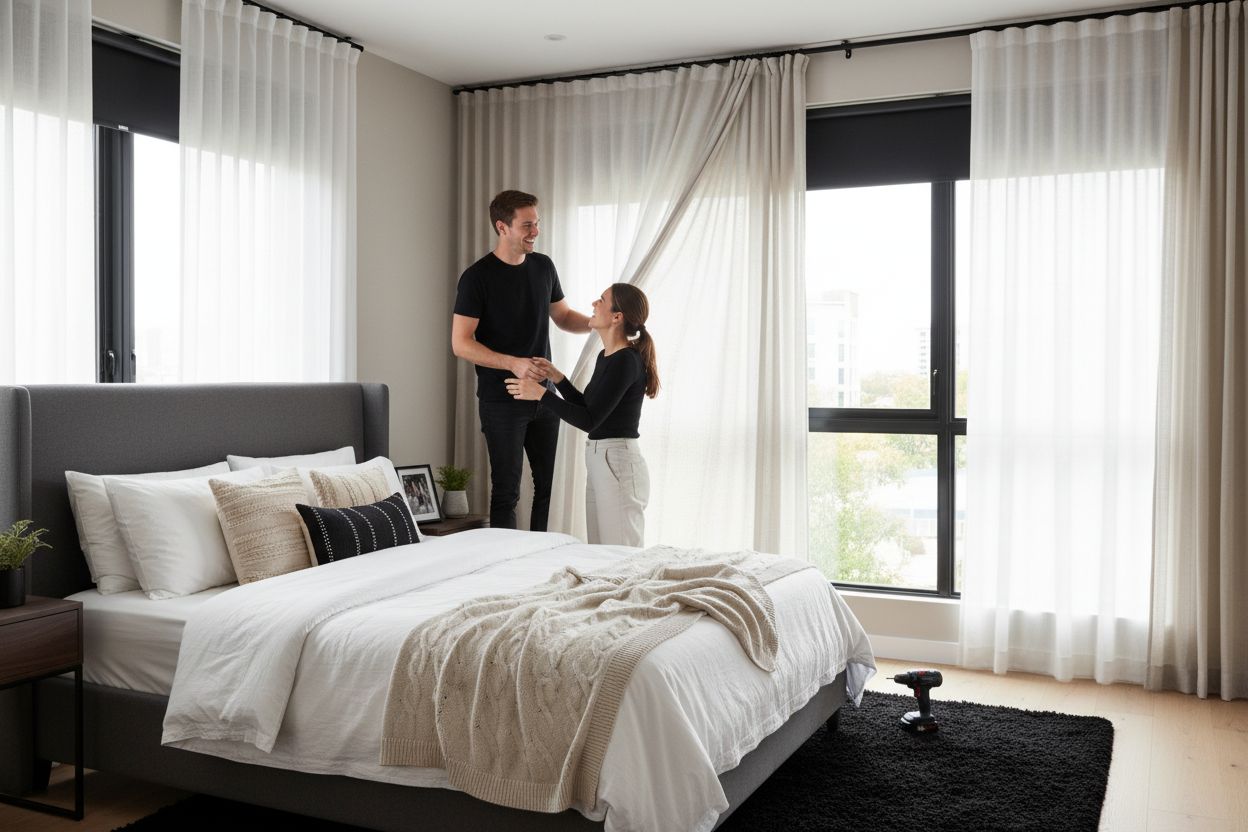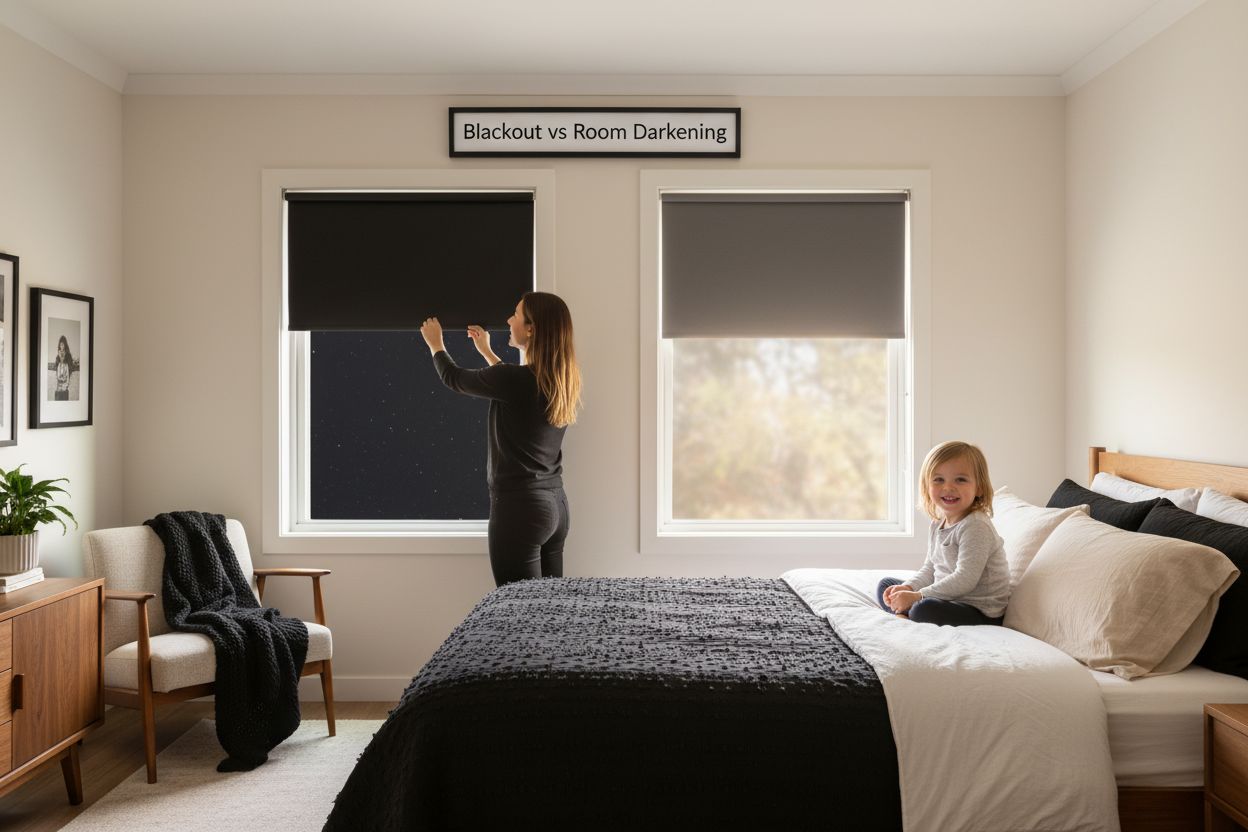
Understanding Blackout vs Room Darkening Shades
Everyone wants the perfect amount of light in their home. Most people think regular curtains or blinds do the trick. But here is the surprise. Blackout treatments can block almost 100 percent of outside light while room darkening options let in just 10 to 20 percent. The twist is that this difference transforms not just how your room looks but also how well you sleep, how much energy you use, and even how private and quiet your space feels.
Table of Contents
- What Are Blackout And Room Darkening Treatments?
- Why Choosing The Right Treatment Matters
- How Blackout And Room Darkening Work
- Key Concepts Behind Light Control And Privacy
- Real-World Applications For Both Options
Quick Summary
| Takeaway | Explanation |
|---|---|
| Select Based on Light Needs | Choose blackout for total darkness, room darkening for reduced light. |
| Consider Sleep Quality | Blackout treatments are essential for uninterrupted sleep, particularly for light-sensitive individuals. |
| Invest in Energy Efficiency | Both treatment types enhance thermal insulation, reducing energy costs year-round. |
| Enhance Privacy and Comfort | These treatments offer visual privacy while controlling light, improving psychological well-being. |
| Evaluate Specific Room Functions | Use room darkening in living areas for comfort and blackout in theaters or bedrooms for complete control. |
What are Blackout and Room Darkening Treatments?
Window treatments designed to control light transmission represent critical solutions for homeowners seeking comfort, privacy, and energy efficiency. Room darkening and blackout treatments offer distinct approaches to managing natural light and creating optimal indoor environments.
Understanding Light Control Mechanisms
Blackout and room darkening treatments are specialized window coverings engineered to reduce or eliminate light penetration through windows. Blackout treatments provide complete light blockage, creating total darkness by preventing nearly 100% of external light from entering a space. These treatments are particularly valuable for individuals who require uninterrupted sleep, such as night shift workers, light-sensitive individuals, or those living in areas with extended daylight hours.
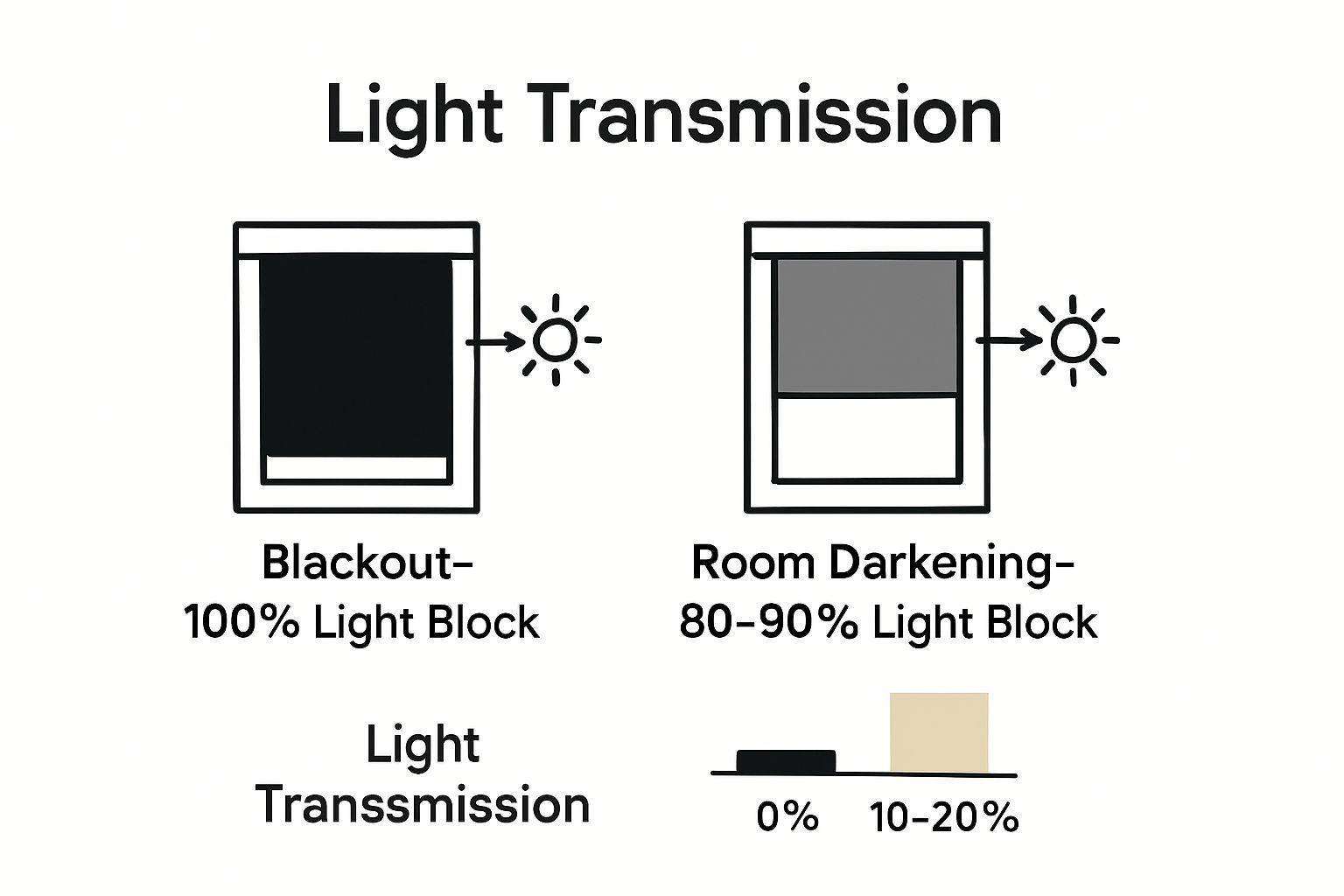
Room darkening treatments, by contrast, offer a more nuanced light control strategy. These window coverings reduce light transmission significantly but do not create absolute darkness. Typically blocking 80-90% of incoming light, room darkening shades allow a subtle ambient glow, maintaining some visual connection with the external environment while minimizing glare and heat.
Practical Applications and Considerations
The selection between blackout and room darkening treatments depends on specific environmental and personal requirements. Key factors influencing this choice include:
- Sleep Quality: Individuals with irregular sleep schedules or sensitivity to light often prefer complete blackout solutions
- Room Function: Home theaters, bedrooms, and media rooms benefit from different light control approaches
- Energy Efficiency: Both treatment types contribute to thermal insulation and potential energy savings
Read more about understanding light filtering options to explore how these treatments can transform your living spaces. Whether you prioritize total darkness or subtle light moderation, modern window treatments offer sophisticated solutions tailored to diverse residential needs.
Why Choosing the Right Treatment Matters
Selecting the appropriate window treatment extends far beyond aesthetic considerations. Window coverings play a critical role in managing indoor environmental conditions, affecting everything from energy consumption to personal comfort and well-being.
Impact on Energy Efficiency
Window treatments serve as an essential thermal barrier, significantly influencing a home’s overall energy performance. Blackout and room darkening treatments can dramatically reduce heat transfer, helping to stabilize interior temperatures and minimize reliance on heating and cooling systems. During summer months, these specialized treatments block solar radiation, preventing unnecessary heat gain. Conversely, in winter, they provide an additional layer of insulation, trapping warmth inside and reducing energy expenditure.
Personal Comfort and Psychological Wellness
Beyond thermal regulation, the right window treatment directly impacts psychological and physiological well-being. Light control is intricately linked to our circadian rhythms, sleep quality, and overall mental health. For individuals with irregular work schedules, light-sensitive conditions, or specific health requirements, selecting an appropriate window treatment becomes crucial. Room darkening and blackout options enable precise light management, creating environments that support restful sleep, reduce eye strain, and promote a sense of personal sanctuary.
Long-Term Home Value and Functionality
Intelligent window treatment selection represents a strategic investment in residential infrastructure. The right treatments not only enhance energy efficiency but also contribute to:
- Property Protection: Reducing direct sunlight helps prevent furniture, flooring, and artwork from fading
- Privacy Management: Offering flexible light control while maintaining visual privacy
- Acoustic Regulation: Certain treatments provide sound dampening qualities
Explore our comprehensive guide on window treatment selections to discover how strategic choices can transform your living spaces into more comfortable, efficient, and personalized environments.
How Blackout and Room Darkening Work
Window treatment technologies represent sophisticated engineering solutions designed to manage light transmission and indoor environmental conditions with remarkable precision and effectiveness.
Material Science and Light Blocking Mechanisms
Blackout treatments utilize advanced fabric technologies engineered to completely obstruct light penetration. These specialized materials typically incorporate multiple dense layers of tightly woven fabrics, often featuring synthetic materials like polyester or acrylic with special light-blocking coatings. The molecular structure of these fabrics prevents light wavelengths from passing through, creating an almost impenetrable barrier against external illumination.
Room darkening treatments, in contrast, employ a more nuanced approach. These window coverings use slightly thinner materials that reduce light transmission without creating total darkness. The fabrics are strategically constructed to filter and diffuse incoming light, allowing a subtle ambient glow while significantly minimizing direct sunlight and glare.
Technological Innovations in Light Control
Modern window treatments incorporate sophisticated design principles that go beyond simple light blocking. Advanced manufacturing techniques enable the creation of treatments with multiple functional layers:
- Thermal Insulation: Specialized materials that provide temperature regulation
- UV Protection: Fabrics designed to block harmful ultraviolet radiation
- Noise Reduction: Densely constructed materials that minimize external sound transmission
Explore our advanced room darkening solutions to understand how cutting-edge textile engineering transforms light management in residential spaces. The intricate balance between material science, design innovation, and functional performance represents the pinnacle of modern window treatment technology.
Key Concepts Behind Light Control and Privacy
Window treatments represent sophisticated solutions for managing interior environments, balancing the delicate interplay between illumination, visual comfort, and personal privacy.
Opacity and Visibility Dynamics
Light control technologies operate on complex principles of material opacity and light transmission. The fundamental mechanism involves manipulating fabric density, weave structure, and surface treatments to regulate the amount and quality of light entering a space. Blackout treatments utilize completely opaque materials that block virtually all external light, creating an environment of total visual isolation. Room darkening treatments, conversely, employ semi-transparent fabrics that allow subtle light filtration while maintaining significant visual privacy.
The scientific principle underlying these treatments involves controlling light wavelengths through strategic material engineering. Specialized fabrics are constructed with tightly interwoven fibers or multiple layered materials that interrupt and disperse light particles, effectively reducing visual transparency and controlling ambient illumination.
Privacy Engineering Principles
Privacy in window treatments extends beyond simple light blocking. Modern solutions integrate sophisticated design elements that address multiple sensory considerations:
- Visual Obstruction: Preventing direct external visibility
- Light Modulation: Controlling interior illumination levels
- Psychological Comfort: Creating environments that feel secure and controlled
Learn more about advanced privacy window solutions to understand how cutting-edge design transforms your living spaces. The intricate balance between technological innovation and human comfort represents the pinnacle of contemporary window treatment engineering.
Real-World Applications for Both Options
Window treatment strategies demonstrate remarkable versatility across diverse residential and professional environments, offering tailored solutions for complex lighting and privacy requirements.
Residential Space Optimization
Blackout treatments excel in creating controlled environments within home settings. Bedrooms become sanctuaries of uninterrupted rest, particularly beneficial for shift workers, individuals with irregular sleep schedules, or those living in regions experiencing extended daylight hours. Parents of young children find these treatments invaluable for establishing consistent sleep routines, blocking external light that might disrupt nap times or early bedtimes.
Room darkening treatments offer more nuanced lighting management in living spaces. They provide soft, diffused illumination in home offices, media rooms, and common areas where complete darkness is unnecessary. These treatments allow natural light filtration while reducing glare on digital screens and maintaining a connection with the external environment.
Professional and Specialized Environments
Beyond residential applications, blackout and room darkening treatments serve critical functions in professional and specialized settings:
- Healthcare Facilities: Creating controlled lighting for patient recovery and diagnostic areas
- Educational Spaces: Managing projection and screen visibility during presentations
- Research Laboratories: Maintaining precise light conditions for sensitive experiments
- Media Production Studios: Controlling ambient light for optimal recording environments
Explore our comprehensive window treatment solutions to discover how strategic light management can transform both personal and professional spaces. The right window treatment is not just about blocking light it is about creating optimal environments tailored to specific needs.
The following table summarizes functional benefits and applications associated with blackout and room darkening treatments to support your decision-making.
| Benefit/Application | Blackout Treatments | Room Darkening Treatments |
|---|---|---|
| Sleep Environment | Best for deep, uninterrupted sleep | Good for reducing early morning or daytime glare |
| Home Theater Use | Essential for total darkness during viewing | Reduces glare, allows minimal ambient glow |
| Child/Infant Rooms | Blocks external light for naps/early bedtimes | Dims room while keeping softer lighting |
| Energy Cost Savings | High, due to increased insulation | Moderate, reduces some heat transfer |
| Furniture Protection | Prevents fading from direct sunlight | Reduces risk of fading |
| Visual Connection | None; room is visually isolated | Partial connection with outside environment |
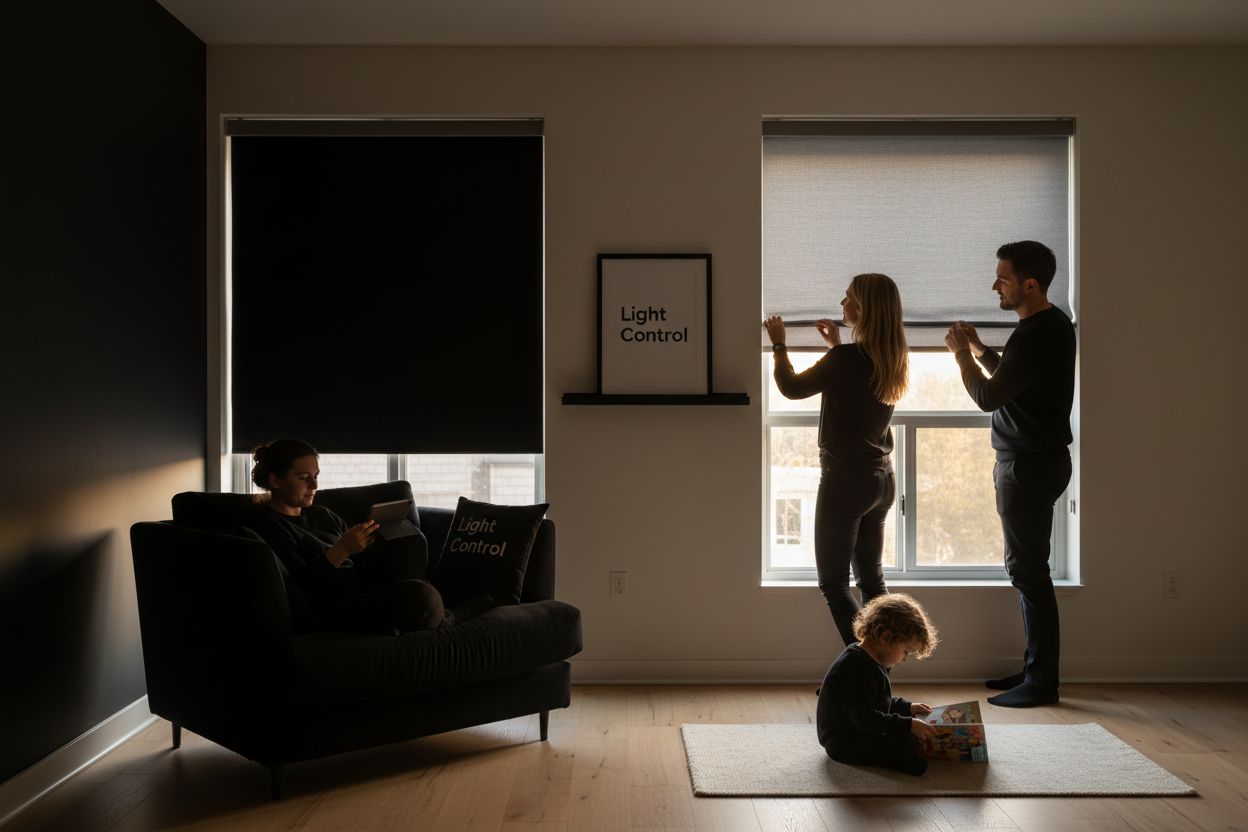
Make Darkness Work for You with Custom Blackout and Room Darkening Solutions
If you struggle with poor sleep due to light leaks or want to create a truly private, comfortable space, you are not alone. Choosing between blackout shades and room darkening treatments can feel overwhelming, especially when your comfort, energy bills, and relaxation depend on making the right choice. At Value Blinds, we understand the frustration of unwanted light and the challenge of finding stylish window coverings that actually deliver on privacy and control.
Explore our Best Sellers and see how easy it is to find the right fit for your home and unique needs.
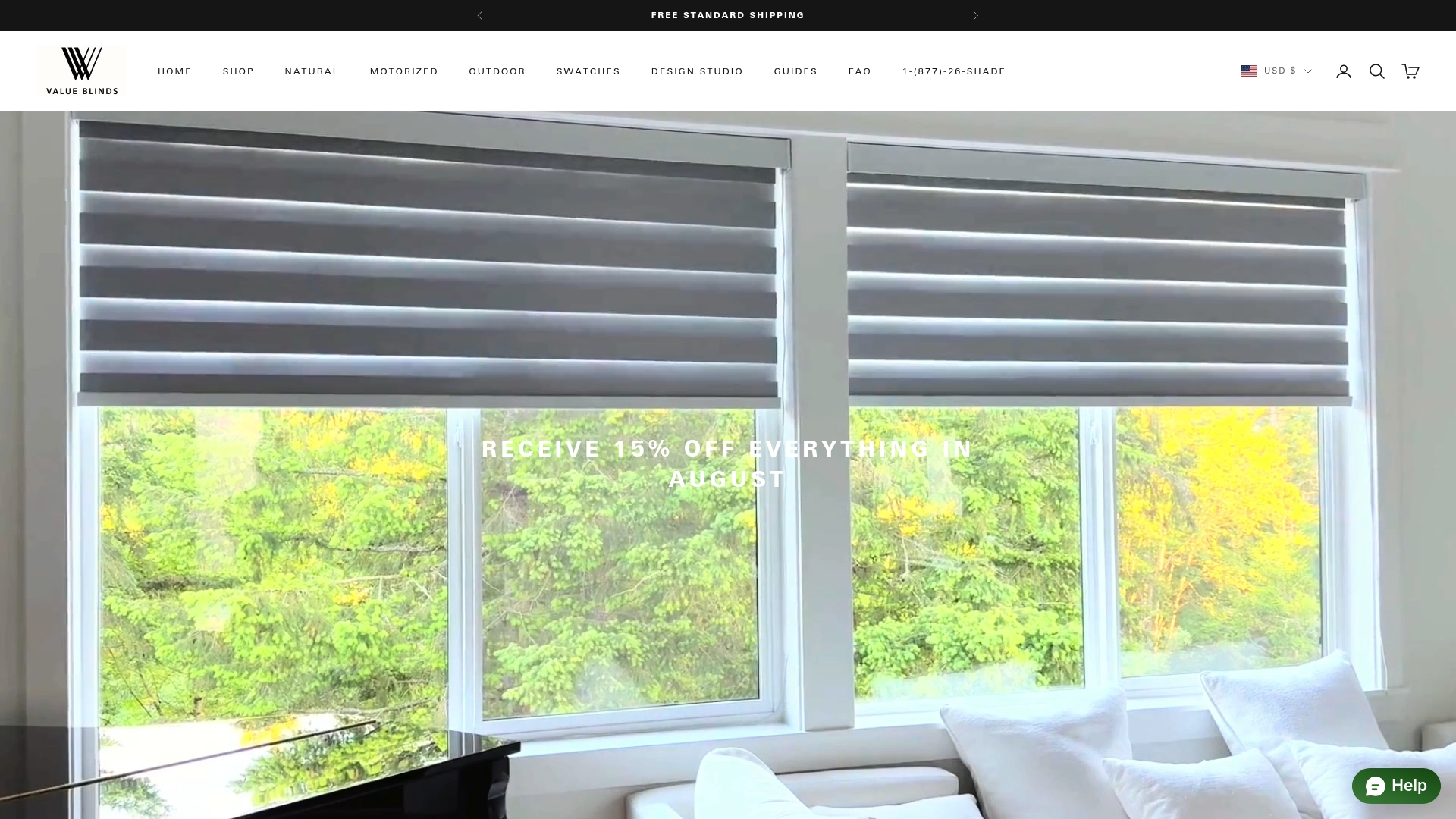
Ready to upgrade your home with effective and beautiful window treatments now? Visit Value Blinds Direct to customize shades that meet your standards for darkness, quality, and style. Experience how smart selections can help you sleep better, protect what you love, and enjoy every room to the fullest.
Frequently Asked Questions
What is the main difference between blackout and room darkening shades?
Blackout shades completely block light from entering a room, creating total darkness. Room darkening shades significantly reduce light but allow some ambient light to filter through, typically blocking 80-90% of incoming light.
How can I determine which window treatment is best for my needs?
Consider your specific needs for light control, privacy, and room function. If you require complete darkness for sleeping, blackout shades are ideal; if you want reduced glare while still having some light, opt for room darkening shades.
Can blackout or room darkening shades help with energy efficiency?
Yes, both types of shades provide thermal insulation, which helps stabilize indoor temperatures. Installing these shades can reduce energy costs by minimizing the need for heating or cooling, especially during extreme weather.
Are blackout shades effective for sound dampening as well?
Blackout shades can offer some sound dampening due to their dense material, which helps reduce noise. For optimal results, choose shades specifically designed for acoustic regulation to further minimize external noise disturbances.
How do I maintain and clean blackout and room darkening shades?
Most shades can be maintained by regularly dusting or vacuuming them to remove dirt and debris. For deeper cleaning, spot clean with a damp cloth; avoid soaking or using harsh chemicals that could damage the material.
Can I use both blackout and room darkening shades together?
Yes, layering blackout and room darkening shades can provide enhanced light control and privacy. This combination allows you to adapt the lighting based on your specific activities or time of day.


